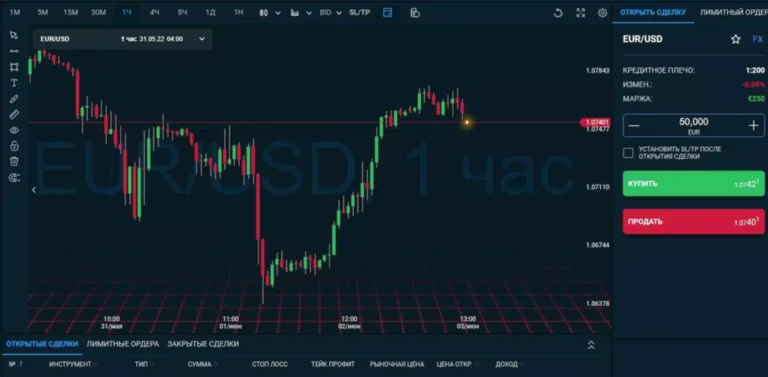Different jurisdictions might have various tax laws and reporting necessities for positive aspects and losses, and it’s essential to stay knowledgeable about these regulations to keep away from Crypto Prime Brokerage potential legal points. Proper tax planning and compliance are essential elements of responsible trading and investing. Blockchain has all kinds of uses, but at its coronary heart it is an economic expertise that enables for unbiased ownership of digital assets. Bitcoin, the primary blockchain, was created to counteract the centralization of the traditional monetary system by providing an open, decentralized, and ‘permissionless’ various cost system.

Evaluating Tradfi And Crypto Prime

Meanwhile, DeFi exists in a largely unregulated space, as anybody is free to publish any kind of good contract they want to a blockchain corresponding to Ethereum. This is both a blessing and a curse — while it permits for fast innovation, it also makes it potential for developers to create and publish predatory or seriously flawed financial merchandise. TradFi corporations are required to stick to rules and can face serious consequences (at least in theory) for violating them. Customers who use banks and other financial institutions need to provide details about their identification in order that the businesses can conduct KYC and AML checks.
Dai Vs Usdt: A Comparison Of Leading Stablecoins
- CeFi is completely totally different from DeFi, despite the very fact that it typically uses DeFi as part of its technique to generate revenue.
- He can be interested in NFTs as a singular digital medium, especially in the context of generative artwork.
- Financial establishments, regulators, and customers might want to work together to manage this alteration and ship the advantages of innovation while sustaining the steadiness and security of the monetary system.
TradFi investors use methods like worth, progress, or revenue investing, tailored to their danger tolerance and goals. In worth investing, for example, buyers focus totally on undervalued shares with robust fundamentals and potential for long-term progress. TradFi traders sometimes unfold their investments throughout stocks, bonds, commodities, and actual property to mitigate threat and balance returns. For example, a typical investor allocates 50% of their portfolio to shares, 30% to bonds, 10% to commodities, and 10% to actual property. They spend cash on a broad range of corporations, industries, and geographic areas to achieve a well-diversified portfolio. While strict rules can discourage innovation, a well-defined regulatory framework can provide readability and foster growth in the DeFi and TradFi industries.
Similarities Between Trading Crypto And Traditional Monetary Property
DeFi diversification, however, revolves around numerous tokens, pools, protocols, and blockchains. Yet, DeFi assets are sometimes extra correlated, making true diversification tougher to realize. Katya is considered one of Cryptology’s expert content material managers and a author with a diverse background in content material creation, modifying, and digital advertising. With expertise in a quantity of completely different industries, largely blockchain and others like deep tech, they’ve refined their ability to craft compelling narratives and develop SEO strategies. In this article, we now have covered some basic notions in TradFi that we imagine are useful for understanding the Financialization of various asset lessons, and may therefore provide essential insights for developing NFT Finance.
Liquidity Situation: Buying And Selling Infrastructure And Market Participation
Over the course of their evolution, DeFi platforms aim to transition management to a extra decentralized construction, typically by way of the issuance of governance tokens. Globally acknowledged markets, similar to commodities, actual property, equities, foreign exchange, and derivatives, are all a half of the vast TradFi umbrella. The decentralisation of finance, in theory, results in a fairer system that’s more advantageous for the individual, somewhat than the establishment. As there are not any centralised authorities governing a particular network, no person can halt payments or block transactions.
There is a need for builders in every space to innovate collectively and bring forth the following evolution of financial providers and infrastructure. The longer-running developments of digitalization, globalization and declining trust in centralized institutions solely help to accelerate TradFi’s need to innovate and create synergies with DeFi, which in turn helps the DeFi motion. TradFi is a term used in the cryptocurrency community to explain the standard finance system. Often, TradFi is contrasted with DeFi, which is a shorthand for “decentralized finance”. Our analysis piece seeks to unravel the nuances of crypto prime brokerage, tracing its journey by way of TradFi parallels, key players, market vulnerabilities, and glimpses of a transformative future. Armed with this understanding, stakeholders can navigate challenges and harness emerging opportunities, propelling the crypto prime brokerage sector towards development and stability.
Differences Between Buying And Selling Crypto And Conventional Financial Belongings: Unique Challenges And Opportunities

For example, blockchain can optimize the processing and settlement of transactions, lowering the time and value involved. The use of distributed ledger know-how supplies a single, tamper-proof version of transaction history, rising belief and effectivity. However, as the benefits of blockchain technology became clear, many TradFi institutions began to vary their position. The potential for increased efficiency, cost financial savings, and new revenue streams led to a shift toward embracing blockchain expertise. According to a report by TripleA, with a 99% compound annual growth rate (CAGR), the growth of cryptocurrency ownership far exceeds the expansion rate of conventional payments, which average 8% from 2018 to 2023. In crypto markets, insofar as fungible tokens are concerned, the distinction is roughly the same, though the primary main difference is that tokens (unless explicitly conceived for that purpose) might not represent securities.

The largest lessons of (fungible) belongings which are traded on world financial markets are fairness and debt instruments. These directly and indirectly influence money and worth flows available to businesses which function in the financial system, subsequently having broad societal results far beyond the operations of the markets themselves [1, 2]. Risk management is a basic follow in successful trading, transcending asset classes and market distinctions. Both crypto and TradFi traders utilize strategies like diversification, position sizing, and stop-loss orders to mitigate potential losses and safeguard their investments.
Peter’s primary crypto pursuits are censorship-resistance, privateness and zero-knowledge tech, though he covers a broad range of crypto-related matters. He can be interested in NFTs as a unique digital medium, especially within the context of generative artwork. If you’re interested in studying more about decentralized finance and the tools you should use to discover the DeFi ecosystem, try our listing of one of the best DEX screeners. The major market is the place the issuance of recent securities occurs, as a end result of companies producing public-facing demand for capital [9]. Securities offered to the common public by way of the first market are obtained direct-from-issuer, and represent the first external touchpoint for the financial instrument — corresponding to Coinbase’s IPO occasion. Now that we’ve mentioned the functions of financial markets on a high stage, let’s take a look at the main distinctions between them.
Don’t connect your wallet to unknown web sites, don’t approve suspicious transactions, and by no means share non-public keys or seed phrases. Maintaining your assets in web3 non-custodial wallets is a must have in DeFi, as you don’t want to expose your self to extra counterparty risk for storing your property (see FTX). It could be extremely useful to check all of the potential risks associated to DeFi, a solid place to begin can be websites like Exponential.
Such stringent measures render traditional platforms appealing to institutional investors because of the enhanced safety. Conventional banks are marked by their tangible presence and home banking permits. Securing such a license is commonly a prolonged and pricey affair, ensuring only elite entities can provide banking services. The efficacy of a centralized mannequin hinges on the belief individuals place in these establishments to handle their property responsibly.
Financial institutions and regulators must work collectively to create policies that encourage innovation whereas maintaining safety and compliance. If the absence of hyper-efficient and well-capitalized market makers in DeFi precludes markets for fungible assets from turning into hyper-liquid, what of NFTs? Attempts to “AMM-ize” NFTs with pool-based flooring NFT automated liquidity provisions such as the LSSVM proposal [17] exist already. What this leads into is a key query of the liquidity/fungibility tradeoff, which we’ll explore in later articles on this sequence.
Please keep in thoughts that each TradFi and DeFi are loosely outlined terms, and embody a wide array of financial and financial exercise. So, the comparison we now have outlined here is only a huge image overview and can’t probably capture all the totally different products and services that can be categorized as either TradFi or DeFi. In distinction, DeFi’s nascent nature and excessive volatility require a shorter-term, extra proactive approach to portfolio administration and rebalancing. Typical DeFi investor monitors market situations and platform updates and rebalances property month-to-month (sometimes weekly and even daily) to adapt to the rapidly altering DeFi panorama. For instance, a DeFi investor might allocate 40% of their portfolio to Ethereum, 30% to Aave swimming pools for lending, 20% to provide liquidity on Uniswap swimming pools, and 10% to Yearn Finance vaults. They purpose to unfold their risk across various DeFi platforms and chains however may face larger correlation among their investments.
The market measurement for cryptoassets is valued at round $2.5T at the time of writing, and it’s nonetheless considered a ‘fringe asset class’ as a outcome of its dimension and adoption when compared to world equity markets. However, recent regulatory attention has nonetheless been directed in the path of where TradFi and DeFi intersect — specifically facets like the application of securities legal guidelines to cryptoassets and the presence of stablecoins normally. Investors in both domains examine numerous financial and market metrics to gauge an asset’s intrinsic worth, enabling them to make knowledgeable choices on undervalued or overvalued belongings.
To totally unpack the possibilities and potential impression of this comparatively new area, NFT Finance, sure elements of TradFi are necessary background. We only cowl ideas that have a direct comparative basis with Traditional Art & Collectibles (Trad A&C), and hence, as we argue, NFT A&C and the broader NFT house. Traditional markets have skilled cases of insider buying and selling and pump-and-dump schemes, while the crypto space has witnessed exit scams and fraudulent preliminary coin offerings (ICOs). Investors must stay vigilant and conduct thorough analysis to avoid falling prey to such schemes. Technical evaluation is another area where crypto and TradFi buying and selling share frequent floor. By employing charting and sample recognition, merchants in both domains can identify potential entry and exit factors for his or her investments.
Read more about https://www.xcritical.in/ here.




